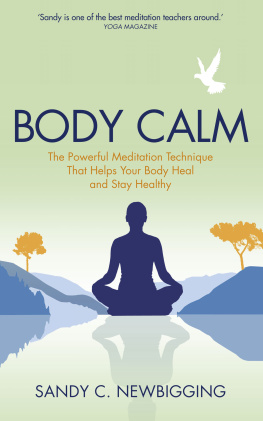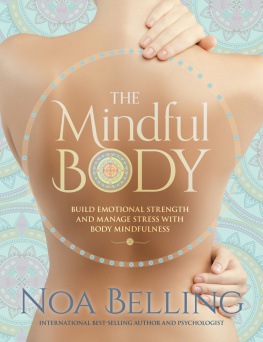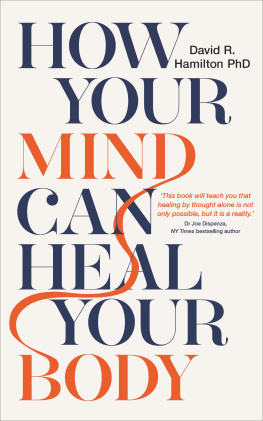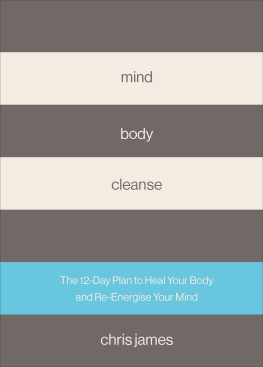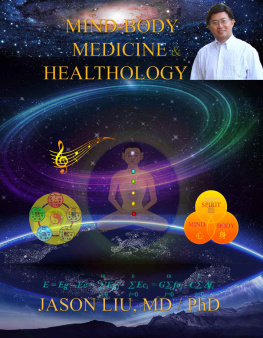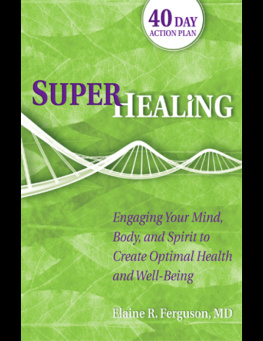Your Body Speaks Your Mind is uplifting, accurate, and ever so helpful for helping us live more fully and joyfully.
Dr Christiane Northrup, author of Womens Bodies, Womens Wisdom
Deb Shapiro is a pioneer in appreciating and applying the fact that all thoughts and feelings get translated into chemicals that run our entire physiology. Here, she shows how understanding the bodymind relationship adds an essential and often overlooked component to your healing process.
Candance Pert, PhD, author of Molecules of Emotion
If you are ready to begin your journey into the land of mind-body relationships, free of guilt, shame, and blame, in search of empowerment and healing, this book can be a valuable guide and resource.
Dr Bernie Siegel, author of Love, Medicine and Miracles and Help Me to Heal
This is a terrific book! Comprehensive, practical, and great fun to read a long-overdue addition to the mind-body canon from a veteran author, teacher, and seeker. I highly recommend it.
Mark Matousek, author of Sex Death Enlightenment and The Boy He Left Behind
Published by Hachette Digital
ISBN: 978-1-405-52535-0
Copyright 1996, 2006 by Deb Shapiro
All rights reserved. No part of this publication may be reproduced, stored in a retrieval system, or transmitted, in any form or by any means, without the prior permission in writing of the publisher.
Hachette Digital
Little, Brown Book Group
100 Victoria Embankment
London, EC4Y 0DY
www.hachette.co.uk
To my husband and life partner, Ed,
and to all my teachers,
both past and present.
May all beings be free from suffering.
A great big thank you to the crew at Sounds Trueespecially to Tami Simon and Alice Feinstein for their inspiration and support, and to Nancy Smith for her clear ear and technical expertise.
I would like to thank the many people who contributed their stories: Christine Evans, Padma OGara, Jenny Britton, Leela, Steve Hennessy, Karuna King, John Taylor, Cheryl, and Sheila, and the many others whose stories there was no room for. I deeply appreciate your honesty and openness. And a very special thank you to my old friend and deeply caring acupuncturist James MacRitchie.
I also thank my husband, Ed Shapiro, for his unbelievable patience, generosity, and enduring love. His contribution to this book is incalculable.
J enny was sixty-five when we met. She had broken her hip three times in her life, always in the same place and always because of an accident. The first time she fell off a horse, the second time was in a car crash, and the third time she fell down a flight of stairs. The accidents were many years apart.
The first time Jenny broke her hip was two weeks after her fianc had died, when she was twenty-one. She never married after this, but went to live with her parents. When she was forty-five, her mother died; a few weeks later Jenny had a car crash and broke her hip again. When she was fifty-seven, her father died, and a few weeks later she fell down the stairs and broke her hip yet again. Each time she broke her hip, the person upon whom she was most emotionally dependent had died.
With each death she transferred her dependency to the next person in linefrom fianc to mother to father. When Jenny, who was now having to use a walking stick to get around, realized this pattern and the emotional relationship to her accidents, she vowed to take herself off on a solitary retreat to: Find out who I am so I can walk by myself for once.
It is people like Jenny who have made me so grateful to be doing this work, to witness their courage, strength, and ability to look within themselves for the answers to their dilemmas. But to be able to do this work has also meant that Ive had to go on my own journey of personal work, for I have always believed that we cannot help anyone else any further than we have gone ourselves.
I was introduced to meditation when I was only fifteen. We lived in London, and it was during the school holidays. My mother wanted to go on a meditation retreat for three days. She did not trust leaving me on my own as I was a fairly wild teenager and my older siblings were all busy elsewhere. As I had already met some of the people who would be at the retreat, I reluctantly agreed to go with herI reckoned I could survive three days. However, the outcome was that she stayed three days and I stayed ten. I dont remember any of the teachings, but I do remember the meditation, the merging into the quiet, the stillness. And I loved it.
By the time I was twenty-one I was teaching meditation. It had become my way of life, my focus, and my healer. I had had a difficult childhood, with an emotionally abusive father. My parents were divorced when I was six, and I was in boarding school from age eight. Consequently, I was carrying a lot of old, repressed anger. Through meditation I came face to face with those lost feelings. I also connected with a sense of myself that was deeper than the anger. Eventually, I was able to observe my feelings without identifying with them. This enabled me to heal an enormous amount of the pain and confusion.
Meditation also led me in different directions. For three years I immersed myself in Jungian psychology by joining a Jungian dream-therapy group, studying and encountering the archetypes and unconscious. It awoke a deep awareness of the human experience. I went on to study rebirthing, massage, reflexology, and bioenergetics. This was the late 1970s in London, an exciting time of exploration and personal development, and I did it all.
Eventually I came to the Metamorphic Technique, a treatment that had evolved out of reflexology but approached the reflex points from a very different perspective. Metamorphosis suggests that the spinal reflexes mapped on the foot are not only the reflexes for the spine but also reflect the nine-month time period of gestation from conception to birth. By working with this understanding on these reflexes, a level of change in our inherent patterns of health and behaviour can be affected. The creator of this work, the late Robert St. John, also explored other relationships between the physical and the non-physical, and here I discovered a way of looking at the body that expanded my thinking and awoke my intuition.
In 1982 I wrote The Metamorphic Technique with Gaston Saint Pierre, the founder of the Metamorphic Association. As that book was finished I knew that one chapter within it was going to take me even farther. It was the Principle of Correspondences, the relationship between mind, emotion, and spirit, and the cells within the physical body, based on the work of the 18th-century philosopher Emanuel Swedenborg.
Meditation was and still is my sounding board, so I used my quiet times to contemplate this extraordinary bodymind relationship that was unfolding in front of me the deeper I delved. I found that when I was really quiet I could intuitively feel what the body was feeling, that I could enter into the body and hear what symptoms or illnesses were saying. As I included ancient Chinese acupuncture and the Eastern chakra teachings with personal experiences and those of my clients, my understanding became clearer. I began to see that the mind is reflected in every part of the human body, that through the body we can get in touch with the issues that we have been repressing, denying, or ignoring in the mind.
In 1990 I was ready to put together all the ideas and insights I had accumulated into my first book on this subject, The Bodymind Workbook. Within a few years I wanted to go furtherto enable the readers to enter into an understanding of their own bodymind, to awaken their own intuition, to learn how to listen to their own bodies. In 1996 I published
Next page


